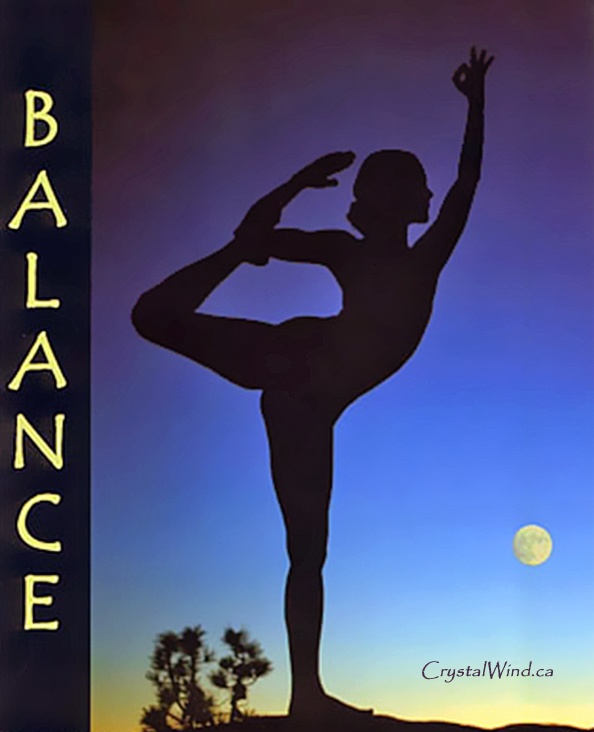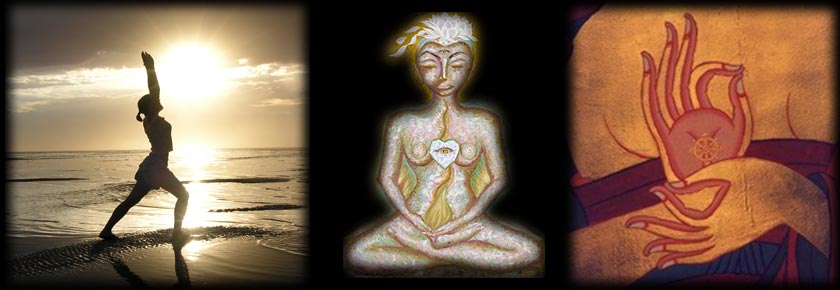Yoga - A Primer
- Details
- Written by AndEl

Yoga, derived from the Sanskrit word meaning "union," is a philosophy that connects the body, breath, and mind to energize and balance the whole person.
This mind-body therapy involves physical postures, breathing exercises, and meditation to improve overall well-being.
Today, millions of Americans of all ages and fitness levels practice yoga regularly.
Although yoga is a spiritual practice to many, the majority of Westerners who practice yoga do so as an exercise and fitness routine or to reduce stress.
History of Yoga
While the practice of yoga started nearly 6,000 years ago, the earliest written records documenting yoga as a health practice are recorded in The Vedas, sacred texts from India dating back at least 3,000 years. Other ancient texts have documented the philosophy and teachings of yoga as well. However, yoga did not emerge as a fully developed practice until 500 B.C. In its traditional form, yoga is considered a complete lifestyle that provides a path to spiritual enlightenment.
The dimensions of yoga are sometimes depicted as a tree with eight limbs:
- Pranayama (breathing)
- Asana (postures)
- Yama (restraint)
- Niyama (healthy observances)
- Pratyahara (sensory withdrawal)
- Dharana (concentration)
- Dhyana (meditation)
- Samadhi (higher consciousness)
The practice of yoga came to the United States in the 1890s as a result of the teachings of a guru named Swami Vivekananda. It gained popularity in the 1960s because of a rising interest in and cultural acceptance of alternative modalities and mind-body therapies.
Today, yoga is often practiced as an exercise form separated from its traditional spiritual roots. In this form, yoga exercise is taught at local YMCAs, health clubs, and yoga centers, and is often part of disease prevention and management programs in hospitals, such as stress-reduction courses for people with high blood pressures and heart disease.

Types of Yoga
As the different connections between the mind and body were explored, various branches or paths of yoga developed. These include:
- Bhakti Yoga -- This form of yoga aims to take all of the love in one's heart and direct it toward the divine. By seeing God in all of creation, the person who practices regularly becomes filled with respect for all life and is encouraged to be sacrificial and to treat others generously.
- Hatha Yoga -- This the most commonly practiced form of yoga in the United States today. Emphasis is placed on physical postures or exercises, known as asanas, with the goal of balancing the opposites in one's life. During Hatha yoga sessions, flexing is followed by extension, a rounded back is followed by an arched back, and physical exercises are followed by mental meditations.
- Jnana Yoga -- This form of yoga emphasizes deep contemplation. Practitioners seek Jnana, or "wisdom," through meditation. The goal is to be one with God.
- Karma Yoga -- This form of yoga is based on the philosophy that "yesterday's actions determine today's circumstances." Practitioners of Karma yoga make a conscious decision to perform selfless acts of kindness. By making today's actions positive, they hope they can improve tomorrow's circumstances for both themselves and others.
- Raja Yoga -- This form is known in India as "the royal ( raj ) road to reintegration." The goal of this type of yoga is to blend the four layers of self: the body, the individual consciousness, the individual subconsciousness, and the universal and infinite consciousness. Raja yoga, being most concerned with the mind and spirit, places its emphasis on meditation.
- Tantra Yoga -- Like Hatha yoga, practitioners of Tantra yoga seek to balance the opposites in their lives. They also try to break free of the "six enemies" (physical longing, anger, greed, vanity, obsession, jealousy) and the "eight fetters" (hatred, apprehension, fear, shyness, hypocrisy, pride of ancestry, vanity of culture, egotism) by using discipline, training, and rituals.
Hatha yoga, the style most Americans practice, is often a general term used to describe many different types or styles of yoga. If a class is simply termed "Hatha yoga," it will probably be relatively gentle and include both breathing and physical exercises (postures). Other styles of yoga can be more intense. Among the more popular styles of yoga are:
- Ashtanga or Power yoga -- a more physically demanding workout involving constant movement from one posture to another ("flow").
- Bikram, or Hot, yoga -- a series of 26 asanas (postures) practiced in a room that is 95 to 100 degrees in order to warm and stretch the muscles, ligaments, and tendons, and to purify the body through sweat.
- Integral -- a gentle type of yoga that may include breathing exercises, chanting, and meditation.
- Iyengar -- emphasizes great attention to detail and precise alignment, and holding poses for long periods of time.
- Kundalini -- emphasizes the effects of breath on the postures, with the aim of freeing energy in the lower body to move upwards.
- Viniyoga -- adapts postures to each person's needs and abilities, and synchronizes breath and postures (breath leads the body into each posture).
How Yoga Works
Scientists don't know exactly how yoga produces its healthful effects. Some say it works like other mind-body therapies to reduce stress, and others believe that yoga promotes the release of endorphins (natural painkillers and mood elevators) from the brain. Studies show yoga can lower heart rate and blood pressure, increase muscle relaxation, and increase breathing capacity.
All branches of yoga mentioned in this report incorporate three major techniques: breathing, exercise (asana or postures), and meditation. These three techniques have been shown to improve health in many ways:
- Breathing lessons -- in yoga, breathwork is known as pranayama. Pranayama increases blood circulation and reduces oxygen consumption, which brings more oxygen to the brain, and improves the efficiency of oxygen use in the body. Also, as lung tissue becomes more elastic and the surrounding muscle more flexible, the practice of pranayama can also increase lung capacity. Getting ample air into our lungs helps us feel alert and focused.
- Asanas (postures) -- provide a gentle-to-intense workout that enhances strength, flexibility, and balance. Some asanas are designed to massage the internal organs, improve circulation, hormone function, digestion, and other body processes.
- Meditation -- stills the mind and induces both physical and emotional relaxation. In so doing, it reduces blood pressure, chronic pain, anxiety, and cholesterol levels.
A Typical Yoga Session

Although most people learn yoga by taking a group class with an experienced instructor, one-to-one sessions with certain practitioners are available. Such private, or semi-private, sessions are more expensive. Classes usually last from 45 - 90 minutes and begin with warm-up exercises, proceed to a guided series of yoga postures designed to stretch and tone all areas of the body, and generally end with deep relaxation or meditation. Throughout the class, the teacher instructs you on breath control and proper body alignment.
Classes are generally taken once a week (or more, if desired). Your instructor will likely encourage you to practice at home to get the most from yoga.
The Benefits of Yoga
Yoga improves fitness, lowers blood pressure, promotes relaxation and self-confidence, and reduces stress and anxiety. People who practice yoga tend to have good coordination, posture, flexibility, range of motion, concentration, sleep habits, and digestion. Yoga is a complementary therapy that has been used with conventional therapies to help treat a wide range of health problems, but it is not a cure for any particular disease.
Studies show that yoga may help the following conditions:
- Anxiety and stress
- Arthritis (osteoarthritis and rheumatoid arthritis)
- Asthma
- Cancer (as an adjunct therapy to reduce stress and strengthen the immune system)
- Chronic back pain
- Diabetes
- Heart disease, by lowering cholesterol levels, lowering blood pressure, lessening stress, and reducing the frequency and severity of chest pain (when combined with a healthy diet)
- High blood pressure
- Hormonal imbalances
- Irritable bowel syndrome
- Pregnancy
In addition, yoga postures aimed at stretching and strengthening the joints in the upper body may improve grip strength and diminish pain among people with carpal tunnel syndrome.
Precautions
Some people may experience stiffness as their bodies adapt to different postures. In addition, as with any physical activity, yoga may lead to an injury if not practiced properly. This is why practicing yoga under the guidance of a trained professional is important.
Be sure to check with your doctor before trying yoga if you have high blood pressure, heart disease, arthritis, or a recent back injury, as you would any physical activity. In addition, if you have any of these conditions, choose one of the gentler forms of yoga discussed earlier.
Some postures are not recommended during pregnancy, but special classes are available for pregnant women. Some postures should not be practiced during menstruation. Be sure to contact your doctor if any exercises cause headaches, muscle cramps, dizziness, or severe pain in your back, legs, or joints.
Remember that yoga instructors are not doctors. Only you and your doctor can decide if a certain yoga posture is too strenuous or might cause you injury depending on your condition.
Liked this article? Dive deeper into personal growth and wellness! Check out CrystalWind.ca for spiritual wisdom or explore AromaWorx.ca for natural well-being tips. Spread the positivity—share this with friends on their happiness journey!
Let’s Chat! Drop Your Thoughts Below! ![]()
Disclaimer Health
All post and information provided within this blog is for educational and informational purposes only, and is not to be construed as medical advice or instruction. No action should be taken solely on the contents of this website. Please consult with your healthcare professional before making any dietary or lifestyle changes or taking supplements that may interfere with medications. Any products or information discussed are not intended to diagnose, prevent, treat or cure any illness, disease or lifestyle. Please consult your physician or a qualified health professional on any matters regarding your health and wellbeing or on any opinions expressed within this website.
Latest Articles
Dive into the Mystical World of the Crystal Wind Oracle Deck!
Get All the Enchanting Details Now!
NEW Expanded Boxed Edition!
Now with 58 Cards for Richer Wisdom!

Imagine a world of inspiration and healing, free for all—made possible by YOU!
Donate Now—Ignite the Magic at CrystalWind.ca!

Epilepsy - Finding A Cure
Your donation can make a difference!
Help us find a cure – donate now!
Unlock Your Light: Join Lightworkers Worldwide on CrystalWind.ca!
Quake Watch
Follow Us!
Who is Online Now
We have 33859 guests and no members online
Featured This Month
The Crystal Wind Oracle Card Deck
The Crystal Wind Oracle™ The Crystal Wind Oracle Myth & Magic Card D... Read more
The Time of No Time: Beltane!
Around the medicine wheel of life we go, from season to season (solstice to ... Read more
Sun in Taurus
Sun in Taurus April 21 through May 21 An Overview of Sun Sign Characteristi... Read more
Cartomancy - Fortune Telling Using Playing C…
Cartomancy is the act of divining using cards. Divining means to find out by... Read more
Taurus Mythology
The Taurus Myth The story of Taurus is most vividly tied to the tale of Zeu... Read more
Frogs Return Moon
Beaver – Chrysocolla - Blue Camas – Blue April 20 – May 20 The Frogs Retur... Read more
Bright Beltane Blessings!
The wheel turns to Beltane, also known as Mayday, marking the beginning of S... Read more
The Seven Chakras and their Meanings
If you could imagine chakras as circles of energy, flowing all the way throu... Read more

































































































































































